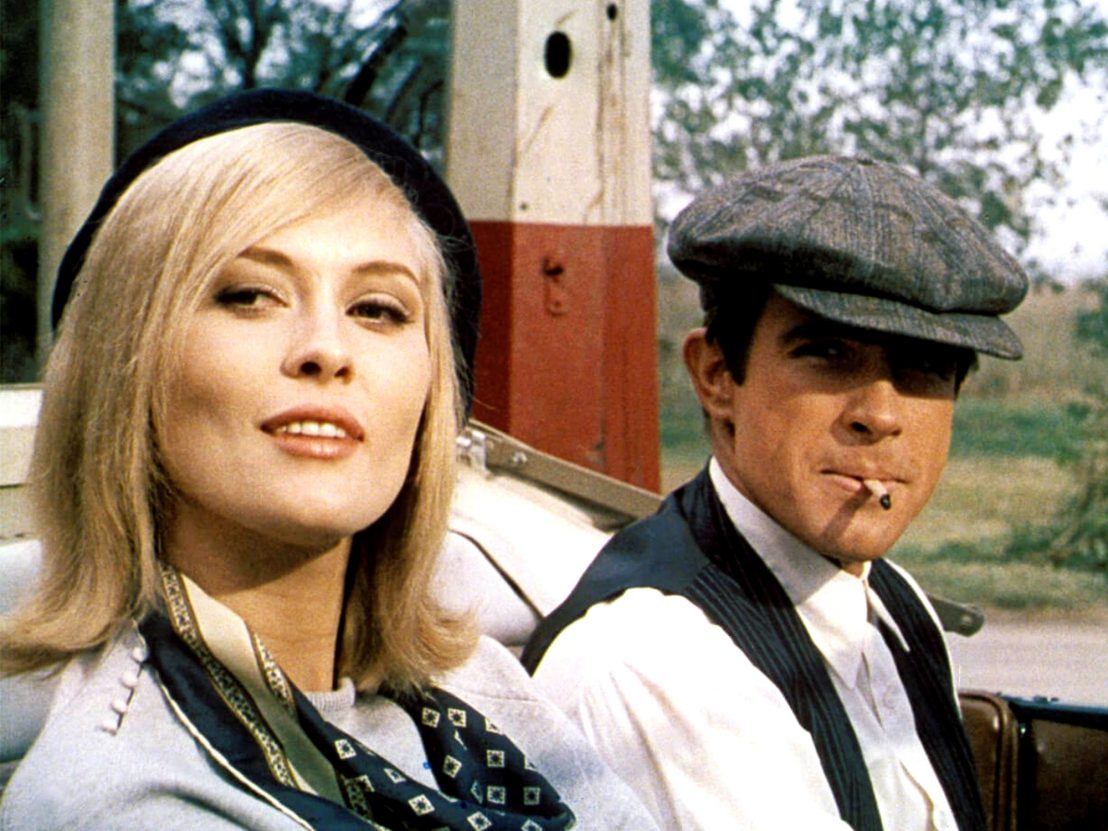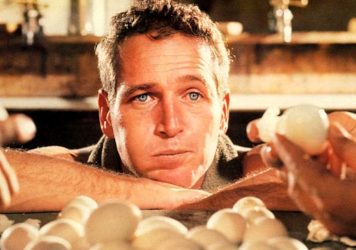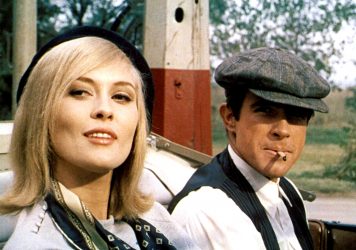
Every list tells a story. Famed Italian art critic Umberto Eco, who wrote a book on lists, once remarked, “We like lists because we don’t want to die.” We write lists to make sense of the infinity of the universe, to make it consumable and understandable but lists promise more than they can deliver. Why is it, that at the end of the year we feel a sense of compulsion to sum up our experience in the form of a top 10?
Taking a look back 50 years to 1967, one of the most influential years in filmmaking, the end-of-year list obsession was just taking off. Around the world, people put together their list of the most important films of the year. They included movies we still talk about today, like The Graduate, Cool Hand Luke and In the Heat of the Night (which would also win Best Picture), but also movies that seemed to be lost in time, such as Joseph Strick’s adaptation of James Joyce’s ‘Ulysses’, which was selected as one of the best films of the year by the New York Times, Roger Ebert and the National Board of Review.
Looking back at 1967, a year of change, patterns emerge and new voices rise to the surface. What will our lists of 2017 reflect on our writing, tastes and obsessions years from now?
This was the last end of year list written by New York Times head film critic Bosley Crowther, as he retired after 27 years at the paper. Writing about the year’s best he said, “This was the year in which Hollywood – or the home-grown film, if you please – made a remarkable emergence from the shadow of eclipse into which it had been cast by foreign imports and the weakness of its own energies.” Throughout his career, Crowther was known in equal measure for his taste in middling American cinema (he included Around the World in 80 Days among his ‘100 Essential films’ of film history) but also supporting foreign filmmakers like Fellini, Resnais and De Sica.
To this day, many point to Crowther’s scathing review of Bonnie and Clyde as a turning point in the divide between an old guard of film critics and a new one. He called the groundbreaking film, “a cheap piece of bald-faced slapstick comedy that treats the hideous depredations of that sleazy, moronic pair as though they were as full of fun and frolic as the jazz-age cutups in Thoroughly Modern Millie.” Bonnie and Clyde, unsurprisingly, is missing from his list of the best of the year.
1. La guerre est finie (Alain Resnais)
2. Ulysses (Joseph Strick)
3. The Hunt (Carlos Saura)
4. In the Heat of the Night (Norman Jewison)
5. Father (Istvan Szabo)
6. Elvira Madigan (Bo Widerberg)
7. Closely Watched Trains (Jiri Menzel)
8. Cool Hand Luke (Stuart Rosenberg)
9. In Cold Blood (Richard Brooks)
10. The Graduate (Mike Nichols)
As part of their reflection on the previous year in movies, on Christmas Eve, along with Bosley Crowther’s list, The New York Times asked some “notables” to share their favourite films of the year. That list included, among others, Busby Berkeley, Ingrid Bergman, Gloria Swanson and Allen Ginsberg. Their choices ran the gamut from Camelot to The Battle of Algiers.
Of the lists, Cass ‘Mama’ Elliot from the Mamas & The Papas feels the most pertinent. Elliot was near the height of her fame and her list reflects a combination of youthful reverence and countercultural power. In the traditions of the Flower children, animals and the environment seem to dominate her list, though there is certainly an anti-war, psychedelic trip quality to many of her other choices. While, traditionally, we look to film critics for the year’s best, but there is something rich and rewarding about turning to pop cultural icons for their choices. Let’s be real, most of us look forward to John Waters’ best of list more than we do most critics.
1. The Jungle Book (Wolfgang Reitherman)
2. Charlie and the Lonesome Cougar (Winston Hibler)
3. Waterhole No’ 3 (William A Graham)
4. A Man and a Woman (Claude Lelouch)
5. How I Won the War (Richard Lester)
6. Modesty Blaise (Joseph Losey)
7. The Trip (Roger Corman)
8. Blow-Up (Michelangelo Antonioni)
9. Bonnie and Clyde (Arthur Penn)
One of the oldest critical associations, The National Board of Review first announced their best films of the year list in 1930. Its membership is comprised of members of the film community, ranging from professional film critics, filmmakers to passionate film fans located in and around the New York metropolitan area. The list reflects a more populist perspective than most of the other lists, featuring two films starring Elizabeth Taylor and Richard Burton, as well as one of the few lists to include the Dr Dolittle musical.
1. Far from Madding Crowd (John Schlesinger)
2. The Whisperers (Bryan Forbes)
3. Ulysses (Joseph Strick)
4. In Cold Blood (Richard Brooks)
5. The Family Way (John & Roy Boulting)
6. The Taming of the Shrew (Franco Zeffirelli)
7. Dr Dolittle (Richard Fleischer)
8. The Graduate (Mike Nichols)
9. The Comedians (Peter Glenville)
10. Accident (Joseph Losey)
1967 represented the beginning of Roger Ebert’s career. He had only just started writing for The Chicago Sun and this would be his first year-end list for the paper. Like other young, emerging critics of the era Ebert upheld Bonnie and Clyde as not only the year’s best movie but a changing force in American cinema. He wrote, “This was the year when Hollywood was rediscovered, after a decade in which the most interesting films came from Europe.” Bonnie and Clyde representing a changing tide in the American cinema, which would usher in a new era of groundbreaking filmmaking in the coming decade.
Ebert’s list reflects both popular films of the era, but also a certain idiosyncrasy. His most peculiar choices are Reflections in a Golden Eye, Huston’s ambitious gold-tinted Southern drama set at an army base, which was a box-office and critical failure, and The War Game, Watkin’s docudrama which images Britain in the aftermath of a Nuclear war.
1. Bonnie and Clyde (Arthur Penn)
2. Ulysses (Joseph Strick)
3. Blow-Up (Michaelangelo Antonioni)
4. The Graduate (Mike Nichols)
5. A Man for All Seasons (Fred Zinnemann)
6. The War Game (Peter Watkins)
7. Reflections in a Golden Eye (John Huston)
8. Cool Hand Luke (Arthur Hiller)
9. Elvira Madigan (Bo Widerberg)
10. In the Heat of the Night (Norman Jewison)
Arguably the most important non-English film magazine in the world, it should come as no surprise Cahiers du cinema’s list feels the most contemporary. The magazine was at its influential peak in 1967, thanks to the global prominence of the French New Wave, and showed its relevance by supporting the likes of Jacques Tati, Věra Chytilová and many of pre-eminent filmmakers of that era. Many French New Wave directors – including Jean-Luc Godard – were still writing for the magazine in 1967.
Sarris, who had only been writing for The Village Voice for a few years, had begun editing an English version. You can read the May 1967 edition online, which includes the lists of the Best Films of 1966 – both the reader’s and critics list – as well as individual ballots from Bernardo Bertolucci, Claude Chabrol, Jean Eustache and Jacques Rivette. Around this time Sarris was also be developing his own version of Truffaut’s auteur theory, and a year later he released his seminal work ‘The American Cinema: Directors and Directions 1929–1968’.
1. Persona (Ingmar Bergman)
2. Belle de Jour (Luis Buñuel)
3. Weekend (Jean-Luc Godard)
4. La Chasse Au Lion D’Arc (Jean Rouch)
5. Playtime (Jacques Tati)
6. The Big Mouth (Jerry Lewis)
7. Daisies (Věra Chytilová)
8. The Nun (Jacques Rivette)
9. 2 Or 3 Things I Know About Her (Jean-Luc Godard)
10. La Chinoise (Jean-Luc Godard)
For The Harvard Crimson (Harvard’s University paper), Tim Hunter put together what is a personal list, where “objectivity breaks down and is replaced by whim.” His movie reflects a youthful embrace of a new kind of cinema. Even the old-guard American filmmakers he selects, Hawks, Preminger, and Welles, represent iconoclasts rather than traditionalists.
He also has a tendency outsider cinema, with choices like the mostly-forgotten Conrad Rooks film Chappaqua, a semi-autobiographical film about the early days of psychedelia in San Francisco, as well as the works of Andy Warhol. Hunter’s list is just as interesting for the film’s he thinks are overrated. He calls The Graduate, “mediocre,” Persona, “an illustration of uncinematic ideas,” and he accuses Godard of “increasingly pedantic seriousness.”
1. El Dorado (Howard Hawks)
2. Falstaff (Orson Welles)
3. Bonnie and Clyde (Arthur Penn)
4. La guerre est finie (Alain Resnais)
5. Hurry Sundown (Otto Preminger)
6. L’Etranger (Luchino Visconti)
7. Bike Boy, The Nude Restaurant, and other 1967 films by Andy Warhol.
8. Chappaqua (Conrad Rooks)
9. Accident (Joseph Losey)
10. Billion Dollar Brain (Ken Russell)
As one of the most influential voices in American film criticism, Andrew Sarris does not pull any punches in his list. He obeys the New York release schedule with such rigidness, that his second best film of the year was initially released in France in 1932. Sarris, whose commitment to auteurism earned him the scorn of Pauline Kael, stands by auteurist icons like Chaplin, while many other critics of the era dismissed his latest effort; for the NYT’s, Crowther wrote that it was an “embarrassment” and “a numbingly archaic farce”.
1. Persona (Ingmar Bergman)
2. Boudu Saved from Drowning (Jean Renoir)
3. El Dorado (Howard Hawks)
4. Point Blank (John Boorman)
5. Gunn (Blake Edwards)
6. Falstaff (Orson Welles)
7. A Countess from Hong Kong (Charles Chaplin)
8. The Exterminating Angel (Luis Buñuel)
9. La Guerre Est Finie (Alain Resnais)
10. Accident (Joseph Losey)
Published 20 Dec 2017

The late Hollywood iconic lets his physical attributes do the talking in this classic prison drama.

From Lady Bird to Logan Lucky, these are our highlights from what’s been a mast year for new movies. How many have you seen?

Arthur Penn’s seminal crime thriller owes a lot to the likes of Jean-Luc Godard and François Truffaut.